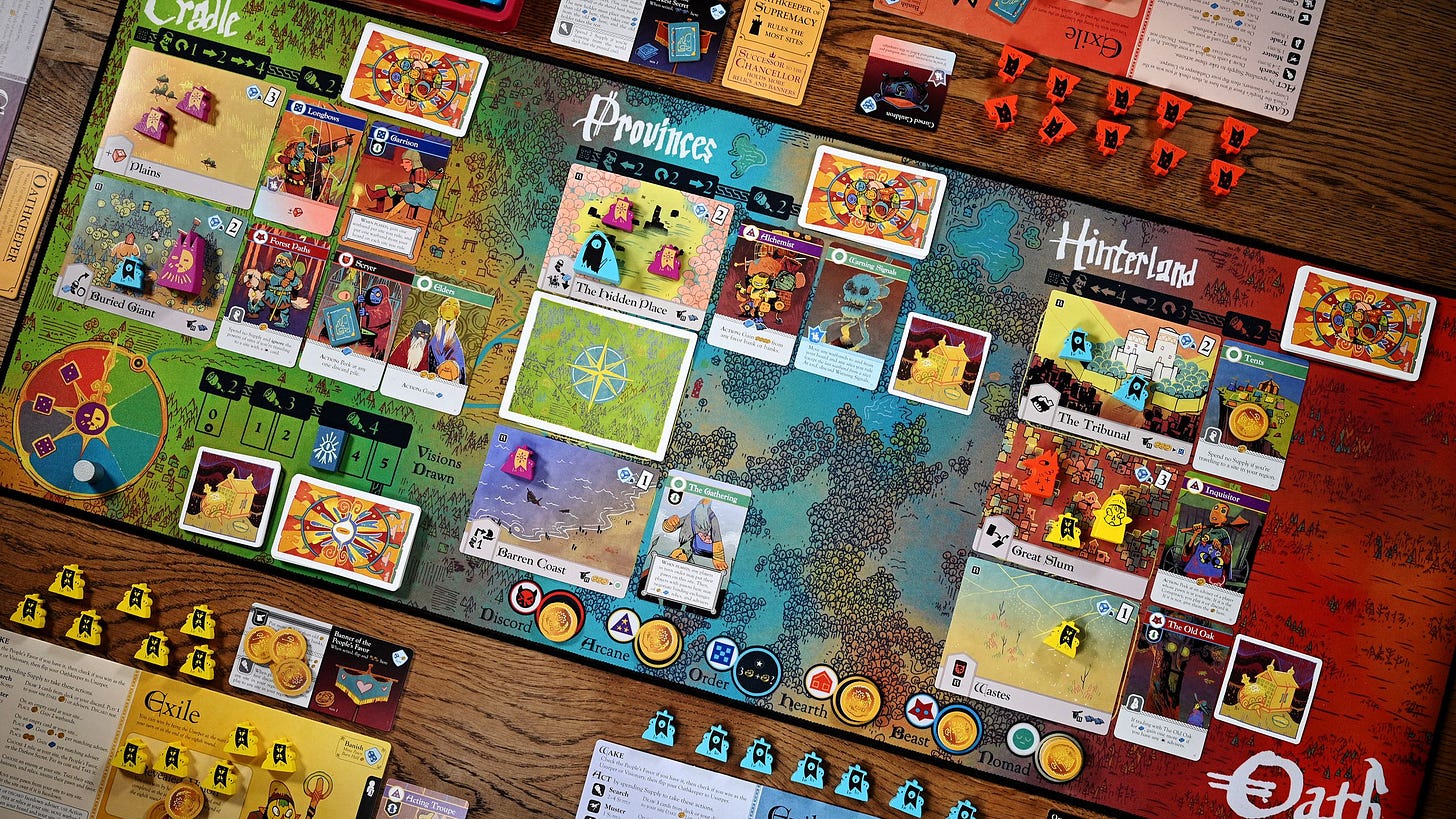Cole Wehrle is, by all accounts, one of the greatest boardgame designers working today. His games, chief among them Root, the meteroic smash hit about warring factions of anthropomorphized woodland creatures, are standouts in their field.
The continued critical accolades of his subsequent releases (Oath, Arcs, Pax Pamir, and John Company) have shown that Root’s success wasn’t some fluke, but that Cole’s design prowess can, consistently, balance key goals of game creation that are (often simulataneously) opposed to each other: personal design ambition, player experience, and commercial viability.
This is, in my mind, because Cole has carved out something of a mythic position for himself in the industry. Unlike most designers who moonlight on their creations but work at otherwise unrelated professions during the day, Cole has the ability, through Leder games and Root’s success, to work eight hours (or more!), every day, on game design.
The space afforded by Root’s success has allowed Cole to expand and hone an intense, meditative design practice that is both wildly open and exploratory while also being fiercely pragmatic and focused. As he puts it, he can workshop designs for months only to throw them out when he realizes they don’t work. Successful designs can take years. Things are given the time they need, and all avenues of possibility are, if not directly explored, are at least considered.
I know this in part due to another unique quality of Cole — he is a prolific writer and documenter of his own process, evident through the in-depth design diaries he posts on (boardgame journal of record) BoardGameGeek leading up to the release of his own games. Each entry is a goldmine of design thinking and instruction, seeing Cole work through the possibilities implied by a games rules throughtly and effectively. That he is able to cogently meditate on his own practice such that he can produce artifacts of it for others to read is astounding, matched only by someone like Price of Persia’s Jordan Mechner.
It’s in these design diaries that I discovered another interesting dimension of Cole’s work — he deeply thinks about “data” in his games. The “stuff” of a game is less disjointed parts that come together, but given the procedural, systemic nature to his games, they are a tapestry that must meld together to produce some desired experience of play.
This approach makes sense, as boardgames are, in some ways, purely data — data, and rules about how that data interacts. Card art, text, iconography, etc. are all assembled and effectively “compiled” into cardboard. Cole knows this, and as such has built up his own tooling and workflows to manage it all. He creates “icon fonts” for card art so data merging works in Adobe Illustrator. He simulates dice outcomes to balance odds for different game actions. He writes python programs to game out game states to bend towards a desired thematic evocation.
It’s this considered and holistic approach to design and data that attracted me to Cole in the first place. The fact he so clearly is just thinking about what he is doing when designing games. It seems like such a simple thing — to think through a design, to think through its implications — but in fact it is hard work. Tunneling through your own maze of rules and exceptions, all while having to surface for air to think of the player and how big your box will now need to be on a shelf.
Talking to Cole then was a no brainer. We dive deep into the all of the above and more, talking about combat odds, rules design, balancing, etc. We get into the data behind his large thematic, player-driven strategy games and trace the lineage of John Company from a postdoc historical exploration to one of the great modern wargames.
It’s a great, nearly career spanning conversation and the longest Game Data episode to date. And in perfect time for spring as well. Start the podcast, put on some shoes, and go for a long walk, listening to Cole and I muse on games and the creative process.
Enjoy!












